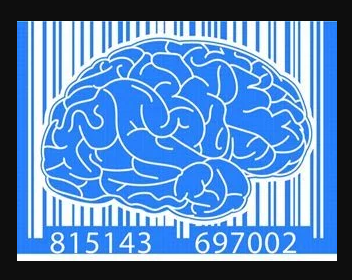Author: Kaya Ismail with Jessica Hawthorne-Castro
Original Publication: CMSWire
Date Published: September 25, 2018
 Personalization is now a fundamental feature of any good customer experience. For instance, 84 percent of customers say being treated like a person, not a number, is very important to winning their business. In other words, customers expect brands to remember their names and preferences throughout their customer journey. But marketers have found that when it comes to gathering all that data, conventional methods like web forms, interviews, focus groups, and surveys provide insights into consumer preferences, but they’re usually lacking in accuracy.
Personalization is now a fundamental feature of any good customer experience. For instance, 84 percent of customers say being treated like a person, not a number, is very important to winning their business. In other words, customers expect brands to remember their names and preferences throughout their customer journey. But marketers have found that when it comes to gathering all that data, conventional methods like web forms, interviews, focus groups, and surveys provide insights into consumer preferences, but they’re usually lacking in accuracy.
Due to the complex nature of the human brain, it has been known for consumers to conceal — perhaps subconsciously — their true preferences and opinions. This has proven true in voice of the customer (VOC) campaigns where brands have attempted to gauge consumer happiness and gather feedback, only to find that customers sometimes gave answers that contradicted their actual behavior.
It’s a question of psychology — as well as a question of context. Maybe you’re talking to a relatively happy customer who’s had an awful, tiring day, and is, therefore, less forgiving of your services at that moment. That’s just one way the human mind can work against marketers trying to gather data, which is why neuromarketing is such an interesting prospect.
What is Neuromarketing, And How Does It Work?
Neuromarketing is a marketing technique that utilizes the application of neuroscience to attain a more accurate reading of consumer behavior. Typical neuromarketing activities include direct use of brain imaging, scanning or other brain activity measurement technology to observe a consumer’s response to certain elements of the product, including packaging, advertising, and other marketing elements. “Neuromarketing is a technique used to improve the effectiveness of marketing efforts by studying the psychology of a company’s consumer base. The goal is to better understand your customers and how your marketing will have an effect on them by tracking their brain activity,” said Jonathan Rosenfeld, Account Executive at Boca Raton FL.-based ScribbleLive.
Kellogg Insights reported that the neuromarketing industry is estimated to be worth around $2 billion — which shows that many brands are taking this data collection method seriously.
PepsiCo’s potato chip brand Frito-Lay is one brand that used neuromarketing to test their products, packaging, and commercials. They discovered that the matte beige packaging picturing potatoes and other healthy ingredients didn’t trigger any activity in the brain that associated with feelings of guilt as much as the shiny bags with pictures of the final product. Based on these findings, Frito-Lay promptly switched from the shiny packaging to the matte beige one.
Bob Clary, Director of Marketing at Lafayette, CO.-based DevelopIntelligence, explained how PepsiCo may have carried out their research. According to Clary, human brain activity can be measured by either functional magnetic resonance imaging (fMRI) or electroencephalography (EEG). “fMRI uses a magnet to measure the brain’s blood flow, allowing examiners to access the brain’s “pleasure center” and measuring responses to different audio and visual cues. EEG uses electrodes to measure the electrical waves produced by the brain, which allow examiners to track emotions like sadness, excitement, and anger when exposed to different audio and visual cues,” Clary said.
What are the Advantages of Neuromarketing?
Neuromarketing focuses on the subconscious mind, which is a lot less bias than the conscious mind, according to Jessica Hawthorne-Castro, CEO at Los Angeles-based Hawthorne. Hawthorne-Castro explained the many advantages that neuromarketing enjoys over traditional customer insight acquisition methods. “Conventional marketing methods like surveys, focus groups and observation all have value, but they do have limitations. Consumers are biased, even when they aren’t trying to be. The subconscious mind processes much more information at a quicker pace than the conscious mind, so appealing to consumers based on neuroscience principals offers the ability for marketers to achieve better results,” she said.
Devin Pickell, Content Marketing Specialist at Chicago-based G2 Crowd, added to Hawthorne-Castro’s point by describing how neuromarketing provides a “perspective that quantifies traditional marketing approaches. It gives concrete information to how we, as humans, process information, rather than through the psychological perspective that marketing originally developed from.”
Rosenfeld added that brands can use neuromarketing when, “deciding on new brand guidelines, packaging, prototyping and their overall messaging strategy in advertising.” He also shared that by using the data gleaned from neuromarketing marketers can, “get more out of their marketing efforts as it will be tailored to the emotions of the audience it is received by.”
What Are The Limitations of Neuromarketing?
Conversely, Rosenfeld noted that, while neuromarketing does have its advantages, the operating costs can get “very high”, especially if you plan on using fMRI to monitor the brain activity of consumers.
Pickell also agreed, “Just like any other research method, neuromarketing can quickly eat up monetary resources because of the need for very specialized equipment and research methods.”
Naturally, as with any other technology, the prices for purchasing, leasing, or operating these technologies will eventually fall, making neuromarketing an accessible strategy for medium and perhaps one day small businesses. But the limitations don’t end there.
In addition to the high costs, Rosenfeld mentioned the difficulties in finding the “right personnel” to carry out these studies as another major limitation. “It is imperative that the staff assigned to this initiative possess both a deep understanding of psychology and the human brain as well as marketing as a discipline.”





